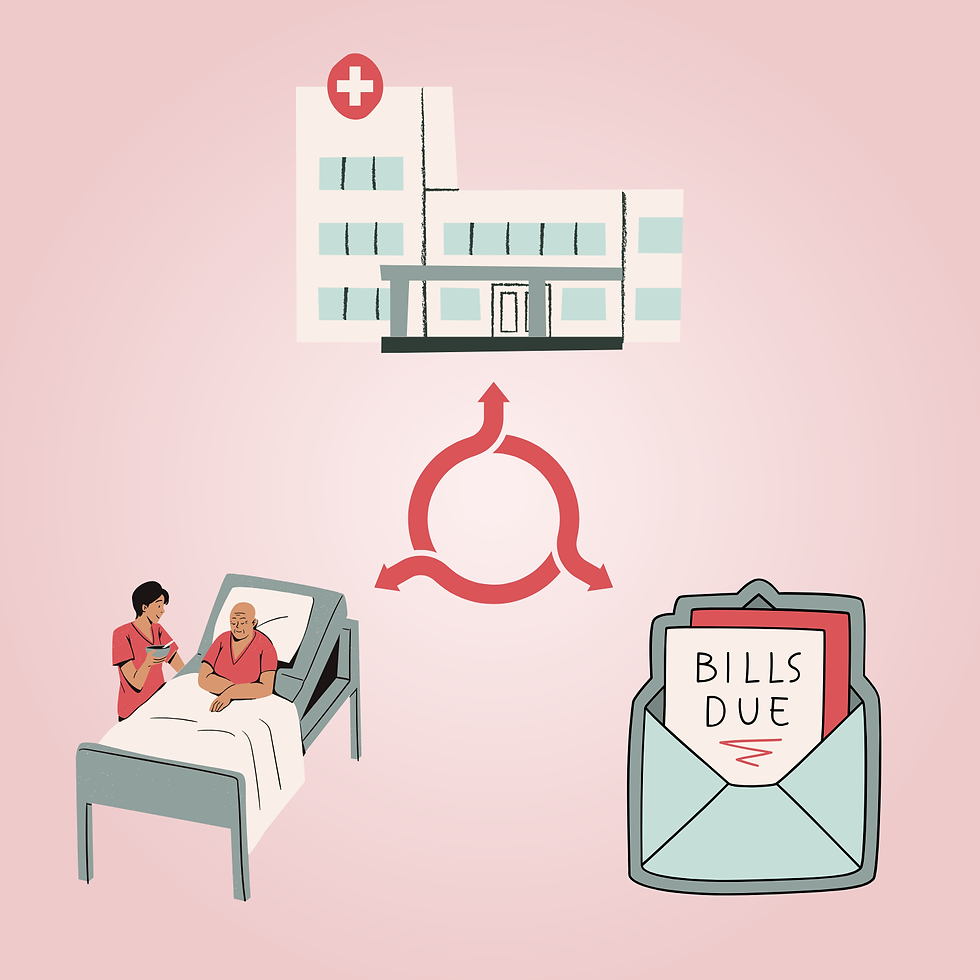The CPR Dilemma
- Nishka Dalal
- Mar 4, 2024
- 3 min read

Throughout various forms of media, but especially in cartoons/animations: the depiction of someone collapsing suddenly and another character rushing to blow into their mouths and push on their chest is quite common. Typically, this simple sequence of events results in a quick, heroic revival. However, the truth is that CPR—cardiopulmonary resuscitation—is not nearly that simple. While almost 65% of Americans claim that they have received CPR training at some point in their lives(1), when it comes time to put those skills into practice, a large portion of these individuals simply don’t.
Why? As found in multiple studies, in terms of out-of-hospital cardiac arrests, bystanders often face barriers to initiating CPR(2). As per the study, some bystanders described the attempt as “uncomfortable and shocking,” and others feeling simply lost and powerless. Individuals may often have concerns surrounding the ethics of CPR, and whether their attempt at CPR could result in consequences instead, leading to a completely hands-off approach. However, it is critical for the general public to know about two things: the call-push-shock protocol, and the Good Samaritan Laws in order to alleviate these concerns.
The call-push-shock protocol is a procedure created by the National Sudden Cardiac Arrest foundation which surrounds the totality of steps bystanders should take if ever witnessing an instance of sudden cardiac arrest. Essentially, the steps include first calling 911, then immediately beginning CPR compressions, and finally using an AED (automated external defibrillator) in order to shock the heart back into its original rhythm(3). CPR alone isn’t enough to save a life—it’s CPR coupled with these other steps which can greatly increase one's chance of survival.
The Good Samaritan Laws vary by state, but aim to protect any individual who attempts to help a person in emergency situations(4). As a result, it is critical for everyone to know that they will not be blamed or punished for whatever the outcome may be in a cardiac arrest situation; instead they will be appreciated for at least attempting to help in any way (e.g CPR, calling 911 etc). This is especially relevant considering that the “mortality rate increases 3% for each minute without CPR and 4% for each minute without defibrillation.” Further, it is important to note that new guidelines place a greater emphasis on constant chest compressions in place of giving breaths that may be administered wrong and hence do not need implementation.
Clearly, dealing with CPR and bystander responses are ethically and morally complex situations that require increased attention and education in order to save lives. However, it is not just complex from a bystander, out-of-hospital standpoint: there is a whole other set of debates when it comes to in-hospital cardiac arrests. Many times, there exist conflicts of interests between doctors, patients, and families. In terms of cardiac arrests in hospitals, universal consent is implied. However, this may result in controversy, as the patient's caregivers may not want to give consent for doctors to do anything to them. Further, some patients may be resuscitated, but not have actually wanted said revival(5).
As a response to these controversial instances, some ethicists have begun to argue that not everyone in cardiac arrest should be given CPR, and that it should only be given to those who are likely to benefit. For example, if a patient has signs of irreversible death, loss of vital functions, or a DNAR order, some people argue that they should be left alone and that CPR should not be attempted at all. Patients and families often feel that individuals should not be “forced” back into life, a very controversial concept.
To conclude, cardiac arrest is a fatal, relatively common incident that occurs both in and out of hospitals. CPR is one of the only solutions to it, but is surrounded by a cloud of ethical concerns that must be widely addressed.
Reviewed by Catie Fristoe
Design by Ariha Mehta
References
1)Bendix, A. (2023, January 4). Doctors call on more people to learn CPR after damar
Hamlin's cardiac arrest. NBC News.https://www.nbcnews.com/health/health-news/
2)Call-push-Shock. (2020). Sudden Cardiac Arrest Foundation.
3)Hansen et al., C. (2017, March 13). Lay bystanders' perspectives on what facilitates
cardiopulmonary resuscitation and use of automated external defibrillators in real
cardiac arrests. PubMed Central (PMC).https://www.ncbi.nlm.nih.gov/pmc/
4)Rubulotta, F. (2013, October). Cardiopulmonary resuscitation and ethics. PubMed Central
5)West, B. (2022, September 12). Good samaritan laws - StatPearls - NCBI bookshelf. National
Center for Biotechnology Information. https://www.ncbi.nlm.nih.gov/books/



Comments